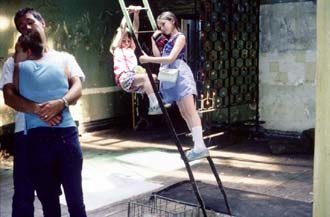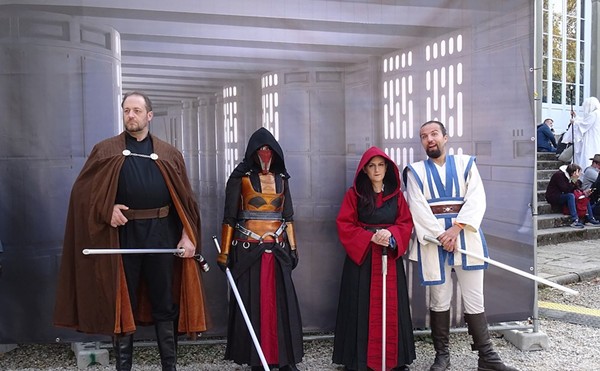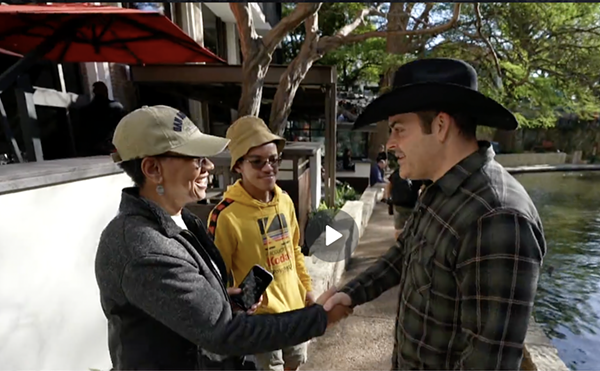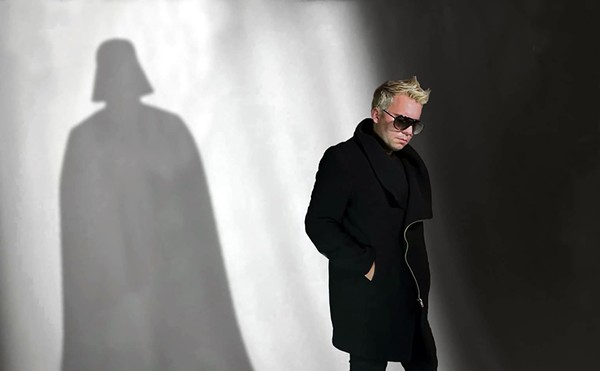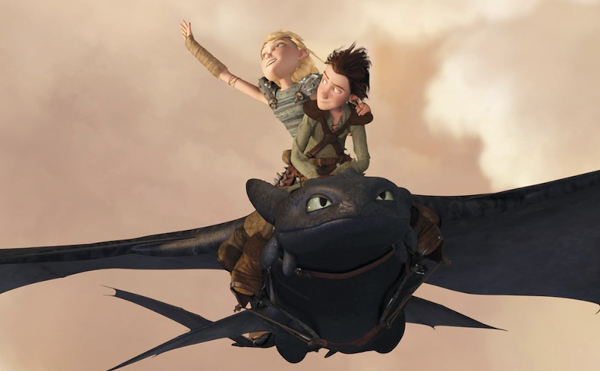| The Sullivan Family in their new American home in Jim Sheridan's loosely autobiographical In America (courtesy photo) |
A n arduous crossing in steerage then embarkation at Ellis Island are standard ingredients of the classic European immigrant experience. In 1924, five months before the Statue of Liberty was designated a national monument, restrictive legislation halted the flow of huddled masses yearning to breathe free. Seventy-nine years later, Johnny, Sarah, Christy, and Ariel Sullivan arrive in Manhattan by automobile. Immigrants from Ireland, they drive across from Canada, pretending to a border guard that they are tourists. Asked how many children he has, Johnny (Considine) says three, when there are only two, 11-year-old Christy and 6-year-old Ariel, perched in the back seat. The third, Frankie, died at age 5 as a consequence of falling down a flight of stairs. Director Jim Sheridan (My Left Foot, In the Name of the Father) dedicates the loosely autobiographical In America, which he co-wrote with two of his three daughters, Naomi and Kirsten, to his own dead son, Frankie. The film is rich with anecdotes about starting over in America, but it is more successful at invoking than evoking magic to connect them all. The Sullivans displace a flock of pigeons from the apartment they move into in a dilapidated building shared with junkies and prostitutes. Although family finances are so precarious that buying a $1.99 electric plug strains the budget, Johnny risks more than $500 to win a kewpie doll at a street fair. The girls learn to say "fall" instead of "autumn" and to trick-or-treat on Halloween.
| Yet for a clan of affectless zombies, they greet the bright lights of Broadway with remarkably ecstatic awe. |
"I'm in love with everything that lives," proclaims Mateo (Hounsou), a painter who is dying of AIDS in an apartment below the Sullivans. A brawny, solitary black man who screams behind closed doors, Mateo bonds with Christy (Sarah Bolger) and Ariel (Emma Bolger) and then with their parents. The screenplay's sentimental conceit is that when Mateo finally passes on he is able to pass on to his new friends the precious gift of life. And an infant Sullivan comes to
| In America Dir. Jim Sheridan; writ. Jim, Naomi, & Kirsten Sheridan; feat. Paddy Considine, Samantha Morton, Sarah Bolger, Emma Bolger, Djimon Hounsou (PG-13) |
In the eyes of the law, which seems blind to their existence, Sarah, Christy, and Ariel are illegal aliens. What is most refreshing about In America is its ability to make us see familiar things as an outsider would. "It was like we were on another planet," says Christy about their ride into New York. Christy, whose voiceover frames the film and who refocuses everything through her videocam, provides a liberating child's-eye view. The Sullivans escape the sweltering summer heat by heading for a movie theater. E.T. happens to be showing, and they identify with the cuddly stranger in a strange land. "I'm an alien," Mateo tells Ariel, playing to the little girl's extraterrestrial fantasies. Watching In America, so are we all aliens, amazed at the place that we call home. •

